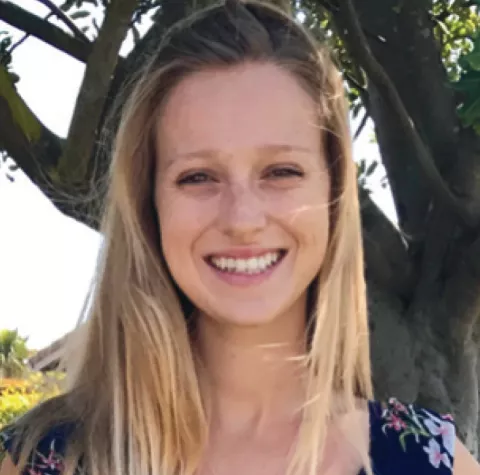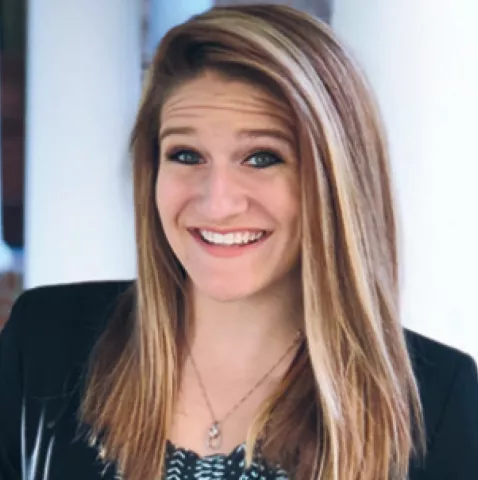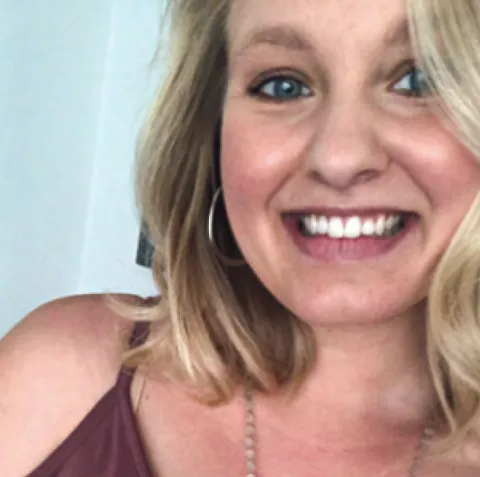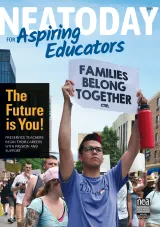It’s no coincidence that there are more than 50,000 members of NEA Aspiring Educators who belong to 1,100 campus chapters across the nation. It takes hard work to build and sustain chapters, and doing much of the work are aspiring educators—like Michigan’s Spencer Tenney, who organized and engaged new student members around a faculty strike. Tenney and three of her peers share tips, unique techniques, and sage advice on how to grow stronger chapters that support members.

Katie Barr
Middle Grades Education
University of Illinois at Urbana-Champaign
The advice I would give other members wanting to grow their hometown chapters:
1) Support! Find allies in the college or university who are willing to help you. Form a connection with the dean of the College of Education to get your meetings added to any emails that get sent out to all of the education students.
2) Recruitment! Get a table at university or college activity fairs, and hold a social event or meeting just a few days later so that people remember you and your organization from the table to the meeting (say “See you at our meeting tomorrow” instead of “We have a meeting in two weeks, I hope you will join us”).
3) Get your name out there! Chalk the quad or sidewalks near where education classes are held. In addition, write on the chalk/dry erase boards in education classrooms. Write something short and to the point, like “Future Teacher? Join the Student Education Association. Meeting Wednesday @ 7 p.m. in Ed. Rm. 2.

Laura Ensberg
Liberal Studies
San Diego State University - California
As president of the SCTA chapter at SDSU, I found that the best way to grow our chapter was by building a strong team of leaders. If a member came to our meeting and was looking to get involved, they were welcome to become part of the team. We simply made up new board positions so everyone could be involved! Distributing the responsibilities across a group of leaders allowed us to do a lot more over the year!
Each week, one of the board members would take the responsibility of planing a meeting. We focused our meetings on providing information and experiences that students did not get from our college courses. We also offered informational meetings for aspiring teachers on the topics of taking the CSET and applying to credential programs. I would advise other members wanting to grow their chapter to first find some committed student leaders and set up some meetings for the year.
Then, clearly communicate to students what SCTA is all about by sharing in passing conversations, through social media, and by email too! Also look for creative ways to get funding to send student members to your state association conferences. The professional development opportunities also helped bring so many excited and committed members to our chapter!

Caitlyn Hinnerschitz
Elementary Education
Coastal Carolina University - South Carolina
Starting a chapter of the Student-South Carolina Education Association is a demanding task for one person to take on, but it is indescribably worth it in the end! It helps to have a support structure in place before starting the process.
We have an executive council full of individuals who want the program to do well. At our chapter, we have five members who are dedicated to making this program succeed, plus an advisor who advocates on our behalf. I would also recommend having monthly professional developments lined up during the application process, which you can share to entice peers to join.
It is also a good idea to have a constitution that lays out the framework of your organization and states what will be required of your members, plus the benefits they will receive. The first week of the semester we had a booth set up in Prince Lobby and handed out applications, which increased our numbers! You have to be willing to work with members and involve them in civic engagement opportunities, no matter how much extra work it entails!

Spencer Tenney
Secondary Biology Education, with a minor in Secondary English Education.
Ferris State University - Michigan
We have had a lot of success this year. When our professors went on strike, we stood in solidarity with them and used it as a teachable moment to show our new and interested members what a union could do. In addition, we also partnered with a new program on campus called LEAD By Design, through which upperclass education students act as mentors for incoming education students.
Through this program we have gained quite a few new members, as we’ve been able to introduce them to the union personally. My advice for other chapters:
Don’t be quiet. Be vocal and be present. Let the faculty know who you are, give them the opportunity the learn your name and know your support, and in turn they will most likely support you. We stand with our faculty here and in turn they have stood behind us, promoting our fundraisers and events, and spreading our name throughout their classes.


